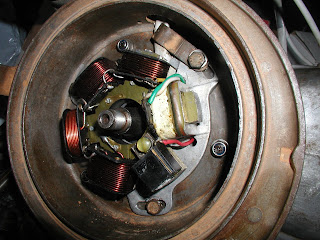There are of course other theories, and mulling it through overnight I now think the 'two bikes' theory is unlikely because of this:
1. If you're so bad at welding that you can't get the crossmembers on straight in either axis, how on earth would you manage to weld two frames together, dead straight?
2. There would be little incentive to do this kind of thing in India. As Dave Williams, author of The Indian Lambretta Guide says: "I cannot imagine a scenario in India (unlike here possibly) where two frames would need to be welded together....Remember that Lambys have no significant value in India so there would be no incentive..." This is a fair point.
3. It's more likely that the frame was showing signs of stress, perhaps even a fracture, that necessitated a stengthening plate top and bottom and a cirumferential weld.
Anyway, back to those crossmembers. Need to find a welder!

























